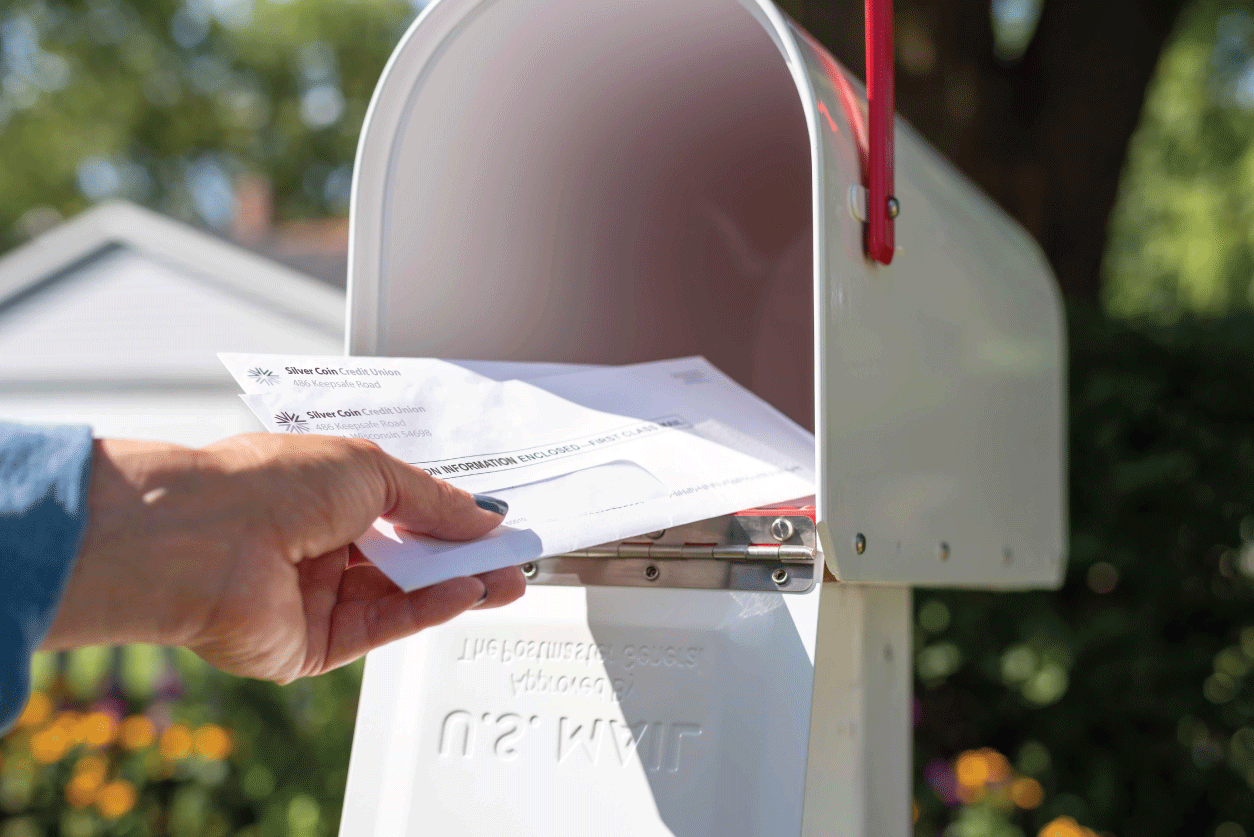Check Fraud – How to protect yourself!
April 21, 2023

Despite a steady drop of checks in circulation, check fraud continues to be on the rise. Fraudsters take advantage and engage in illegal and deceptive schemes by using a variety of different types of check fraud to steal money from people and businesses.
Beginning in December of 2022, the Outagamie County Sheriff’s Office received numerous complaints of mail theft. The suspects were targeting businesses and stealing incoming and outgoing checks from the mailboxes, mainly during the overnight hours on the weekends. The total amount in the Village of Greenville alone surpassed $500,000. The checks were later altered and fraudulently cashed into various bank accounts throughout the U.S, via mobile deposit or at ATMs. Similar cases of fraud are happening throughout the Fox Valley and Northeast Wisconsin, all of which appear to be related.
If you think you’ve fallen victim to check fraud, contact our member service team immediately.
 Fraudsters use a variety of different types of check fraud to steal money from people and businesses. These are some of the most common types of check fraud that may impact you or your business.
Fraudsters use a variety of different types of check fraud to steal money from people and businesses. These are some of the most common types of check fraud that may impact you or your business.
Paperhanging
Paperhanging refers to situations where account holders purposefully write bad checks on their accounts. In some cases, the account holder may have opened the account just to write bad checks. Remind your business clients that they may not want to accept starter checks or checks under a certain number from their members — a lot of check fraud is related to brand new accounts. Other paperhanging fraud includes people purposely writing checks from closed accounts — knowing full well that the funds are not there to cover the check.
Additionally, the check writer may have an established account, but they write a check that exceeds their balance. They may do this with intent to overdraw the account before they leave the country, they may be trying to take advantage of the float time, or they may simply be mistaken about their available balance.
Check Kiting
Check kiting involves two different accounts. The same person may own both accounts, or they may work with another account holder. Essentially, they write a check from one account to another account. This check creates the illusion of a balance in the second bank account. Then, they may withdraw cash and run, or they may repeatedly kite checks between the accounts to take advantage of the float time.
Check Floating
Check floating is any situation where someone writes a bad check to take advantage of the float time. Sometimes, account holders float a check to buy an extra day or two before payday. In other cases, they run a more elaborate scheme that is a variation on the scam explained above.
Check Forgery
Check forgery is when someone forges their name on a check. They may take someone else’s check and forge their signature. Then, they may deposit the check in their own account or use it to buy goods or services at a business.
In other cases, thieves may forge the endorsement. For instance, if a check is written out to Bob Smith, a thief can forge Bob Smith’s signature on the endorsement line, and then they deposit or cash the check by finding someone who is willing to accept an endorsed check. Other times, the forger may pretend to be Bob Smith and cash the check at his financial institution.
Check Theft
Check theft typically involves forgery. Basically, someone steals a paper check and forges the signature. In some cases, the fraudster may steal an account number and print and use checks from that account. When the thief prints checks, that is usually called counterfeiting.
Identity Check Theft
With this type of check fraud, the thief steals personal details from someone. Then, they open an account in that person’s name, and they write bad checks from the account. By the time the financial institution closes the account, the fraudster is gone, the financial institution gets stuck with the bad checks, and the identity theft victim has to deal with the repercussions of compromised information.
Account Takeover
This is similar to identity theft, but in this case, the scam artist takes over another person’s account. They may gain access through the online account or even by going into a branch and pretending to be the actual account holder. At that point, they may draft fake checks from the account, use the check for a kiting scheme, or explore other possibilities.
Chemical Alteration
Also called washing, chemical alteration is when some uses chemicals to wash away the information printed on a check. Then, they populate the check with new information. They may write the check out to themselves or another entity, or they may change the amount.
Fake Paycheck Scams
In a fake paycheck scam, the scam artist reaches out to the victim and offers them a job. Often, the position is to be a secret shopper or test out a wire transfer service. Then, the scam artist sends a paycheck to the victim and gives the victim instructions. Generally, the victim needs to test out a wire transfer service by sending money to someone else. The paycheck was large enough to cover the wire plus some payment. However, when the check bounces, the victim is left with nothing, and they’ve lost the wired funds.
Fraudulent Lottery Checks
In another variation of this scam, the scam artist tells someone they have won the lottery. They receive a check for their winnings, but they are instructed to send back some money to cover fees and taxes. By the time they realize the check is no good, the payment they issued for their fees and taxes is gone.
Bad Checks for Purchases
In yet another check fraud scam, the scam artist contacts someone who is selling something online. In some cases, they may even come to a garage sale or another in-person sale. Then, they ask if they can write a check over the purchase amount and get change.
To entice the victim to say yes, they might even offer to pay a bit more for the purchase. For instance, if the victim is selling a bike for $500, the scammer may offer a check for $800 if the seller will give them $200 in cash. The seller thinks they are making an extra $100 for being so accommodating, but in reality, the check is bad, and the seller is losing their bike and the $200 cash.
Money Order Fraud
This type of check fraud starts with a fake money order. The scam artist gives the victim a money order, and they ask for a check in return. They may use all kinds of excuses to convince the victim to make this trade. Again, however, when the victim deposits the funds into their bank account, they find out the money order isn’t real, and they lose all the funds from their check.

